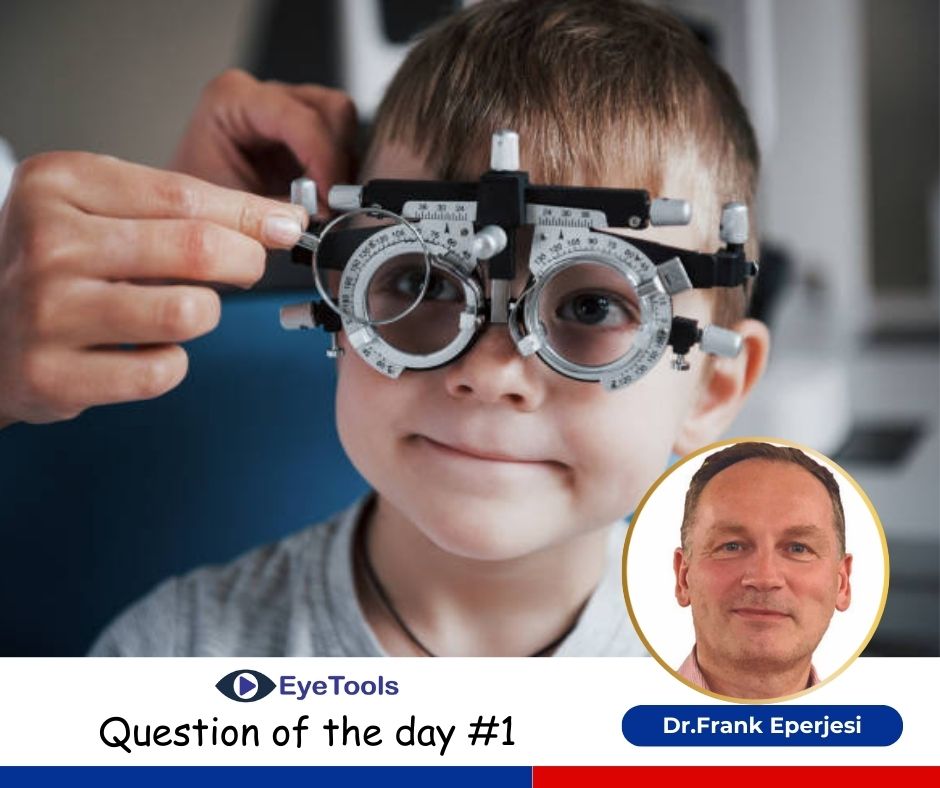
Welcome to question of the day #1
You see a four-year-old child who, on initial examination appears to have a subjective refraction of right and left +1.00DS. However, you saw right and left +3.00DS on retinoscopy. What will you do next? What will you then prescribe?
This strongly indicates that the child is over accommodating during subjective refraction. It’s challenging to conduct subjective refraction on young children as they, in my experience, prefer to look anywhere except across the room at the target you have selected. Practitioner with computer controlled visual acuity monitors can use a cartoon or something that will appeal to the child. The other challenge is whether the child understands the concepts of ‘same’ and ‘different’. Without this subjective refraction is unlikely to be successful. My preference is to conduct a cycloplegic refraction using 1% cyclopentolate and waiting 40 minutes for cycloplegia to take place. I use 0.5% cyclopentolate for some neurodiverse children.
I used to work in a practice where parents were given the drops to instil at home in the morning while the child was asleep and then to have a morning appointment. This overcomes the problem of the child being anxious during retinoscopy if it’s the optometrist undertaking the instillation. Once cycloplegia has taken place I can then conduct a cycloplegic refraction in the usual way and record the spherical and/or sphero-cyl refractive correction taking into account tonus allowance.
I would prescribe the full prescription minus tonus allowance and review in a month after the spectacles were collected. Where cyclopentolate cannot be used because of regulations or a previous reaction, near fixation retinoscopy (Mohindra technique) provides a useful alternative.



1.jpg)



.jpg)
.jpg)



_(Instagram_Post).jpg)
.jpg)
_(1080_x_1080_px).jpg)


with_UP_Cabinet_Minister_Sh_Nand_Gopal_Gupta_at_OpticsFair_demonstrating_Refraction.jpg)
with_UP_Cabinet_Minister_Sh_Nand_Gopal_Gupta_at_OpticsFair_demonstrating_Refraction_(1).jpg)

.jpg)








.jpg)



.png)




